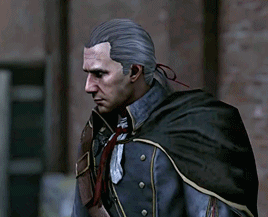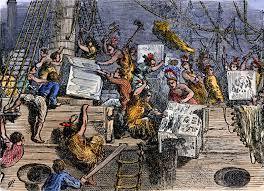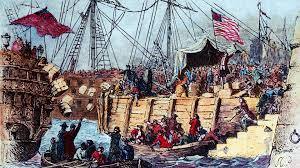#13 Colonies
Explore tagged Tumblr posts
Photo

British American Colonies, 1775
96 notes
·
View notes
Text
Happy 299th Birthday Haytham Kenway
This man is LEGIT almost 300 YEARS OLD OML

Happy Birthday you cranky tricorn hat wearing jobbernowl.
#assassins creed#ac: forsaken#haytham kenway#grandmaster of the templar order#king crabby pants#snarky af British but claims to not be British man#shoulda coulda woulda been a better dad to Ratonhnhake:ton if he hadn't been brainwashed by the templars FIGHT ME#colonial era America#13 colonies#American Revolution#AC3#this man is cranky and snarky and sassy and I wanna smack his tricorn hat off his head BUT happy birthday you cranky crusty crustacean#again this post is late because of finals
23 notes
·
View notes
Text

#funny#humor#tweets#social media#philadelphia flyers#hockey#nhl#fans#hockey fans#t-shirts#shirts#clothes#the british#13 colonies#slogans
20 notes
·
View notes
Text

Yes, Georgia banned the importation of slaves in 1798 when the Georgia Constitution was ratified:
Background Georgia had a history of antislavery attitudes, starting with the colony's founding in 1733. The colony's trustees banned slavery in 1735, but the ban was overturned in 1751.
1793 law In 1793, the Georgia Assembly passed a law prohibiting the importation of enslaved Africans, but it didn't take effect until 1798.
1798 Constitution The 1798 Constitution prohibited the importation of slaves and emancipation by legislation.
Fear of slave revolts One reason for the ban was a fear of slave revolts.
Planters' disregard Planters ignored the law and continued to increase their enslaved workforce.
Entry of free Africans Georgia prohibited the entry of free Africans, so freed slaves couldn't return to the state.

The life of a slave in Colonial America differed greatly depending on the colony, nature of work, the size of the enslaved workforce, temperament, and the power of the enslaver. Additionally there had been a variety of psychological experiences of those that experienced slavery from birth, versus those born free, and differences across the different ethnicities.
The first enslaved Africans in Georgia arrived in 1526 with Lucas Vázquez de Ayllón's establishment of San Miguel de Gualdape on the current Georgia coast, after failing to establish the colony on the Carolina coast. They rebelled and lived with indigenous people, destroying the colony in less than two months.
Two centuries later, Georgia was the last of the Thirteen Colonies to be established and the furthest south (Florida was not one of the Thirteen Colonies). Founded in the 1730s, Georgia's powerful backers did not object to slavery as an institution, but their business model was to rely on labor from Britain (primarily England's poor) and they were also concerned with security, given the closeness of then Spanish Florida, and Spain's regular offers to enemy-slaves to revolt or escape. Despite agitation for slavery, it was not until a defeat of the Spanish by Georgia colonials in the 1740s that arguments for opening the colony to slavery intensified. To staff the rice plantations and settlements, Georgia's proprietors relented in 1751, and African slavery grew quickly. After becoming a royal colony, in the 1760s Georgia began importing slaves directly from Africa

Slave markets existed in several Georgia cities and towns, including Albany, Atlanta, Augusta, Columbus, Macon, Milledgeville, and above all, in Savannah. In 1859 Savannah was the site of a slave sale colloquially known as the Weeping Time, one of the largest slave sales in the history of the United States. Historian E.A. Pollard wrote in 1858, "Macon, you must know, is one of the principal marts for slaves in the South. Some time ago, I attended on the city's confines an extraordinarily large auction of slaves, including a gang of sixty-one from a plantation in southwestern Georgia. The prices brought were comparatively low, as there was no warranty of soundness, and owing very much, also, to the fact that the slaves were all sold in families." At the beginning of the American Civil War, active traders in Atlanta included Robert M. Clarke, Solomon Cohen, Crawford, Frazer & Co., Fields and Gresham, W. H. Henderson, Inman, Cole & Co., Zachariah A. Rice, A. K. Seago, B. D. Smith, and Whitaker and Turner.
Importing slaves to Georgia was illegal from 1788 until the law was repealed in 1856. Despite these restrictions, researchers estimate that Georgians "transported approximately fifty thousand bonded African Americans" from other slave states between 1820 and 1860. Some of these imports were legal transfers, others were not. Samuel Oakes, the father of a Charleston slave trader named Ziba B. Oakes, was implicated in illegally importing slaves to Georgia in 1844, which resulted in a newspaper notice about the case from Savannah mayor William Thorne Williams that concluded, "The laws of our State are severe, inflicting heavy fines and Penitentiary confinement on such as shall be convicted of these offences Our own safety requires us to be vigilant in preventing the outcasts and convicted felons of other communities from being brought into ours. And all those entrusted with the administration of the laws are bound to use their utmost efforts to bring to just punishment such as shall be guilty of this nature."
Slaves intended for "personal use" could be imported which resulted in a number of workarounds used by traders. One described in the Anti-Slavery Bugle in 1843: "Hamburg, South Carolina was built up just opposite Augusta, for the purpose of furnishing slaves to the planters of Georgia. Augusta is the market to which the planters of Upper and Middle Georgia bring their cotton; and if they want to purchase negroes, they step over into Hamburg and do so. There are two large houses there, with piazzas in front to expose the 'chattels' to the public during the day, and yards in rear of them where they are penned up at night like sheep, so close that they can hardly breathe, with bull-dogs on the outside as sentinels. They sometimes have thousands here for sale, who in consequence of their number suffer most horribly."
Killing of traders Jesse Kirby and John Kirby
Another example of slave importation to Georgia during this period is known from the 1834 killing of "negro traders" Jesse Kirby and John Kirby by enslaved men they were transporting overland to Georgia in a coffle." The Kirbys had been to the slave markets of Baltimore (one enslaved person was purchased at Chestertown) and were traveling with a group of at least nine slaves through Virginia. The Kirbys were killed by enslaved men named George and Littleton at an overnight campsite near Bill's Tavern, around "Prince Edward C. House," near Farmville, Prince Edward County, Virginia, by between two and four enslaved men. Such campsites were apparently typical to the transportation of slaves by overland coffle, as a letter written from Georgia in 1833 described, "During this and other days I have passed by many negro traders, who were crossing to Alabama. These negro traders, in order to save expense, usually carry their own provisions, and encamp out at night. Passing many of these encampments early in the morning, when they were just pitching tents, I have observed groups of negroes hand-cuffed, probably to prevent them from running away. The driver told us, that a thousand negroes had gone on his road to Alabama, the present spring." Slaves working "collectively" to do violence to "cruel owners" was a comparative "rarity" in the history of antebellum violence by the enslaved in Virginia, but "Having left Maryland and their homes behind, [George, Littleton and their allies] likely believed that violence afforded them the last possible opportunity to escape whatever fate awaited them in Georgia. Georgia offered fewer opportunities for escape than Maryland. The movement south threw the slaves lives into flux.

#african#afrakan#kemetic dreams#africans#brown skin#afrakans#brownskin#african culture#georiga#slave trade#slavery#atlanta#atlantic slave trade#maryland#underground railroad#ban slavery#macon#Milledgeville#savannah#south carolina#augusta#weeping times#colonial america#13 colonies
10 notes
·
View notes
Text
the urge to make a new set of ocs but it's just the 13 colonies. that's it. that's the set of ocs.
6 notes
·
View notes
Text


The Boston Tea Party: 92,000 lbs of imported tea were thrown overboard 250 years ago tonight, in the lead-up to the American Revolution.
#The Boston Tea Party#American Revolution#16 December 1773#Massachusetts#East India Co.#Griffin's Wharf#13 Colonies#US history#British Empire#King George III#riot#On this day
44 notes
·
View notes
Text
There needs to be more on 13 colonies in the countryhuman fandom people draw him in period inaccurate clothes to many times
#dawg what is my boy doing in suspenders and a spear pointed collar shirt#that is not my colonial son#ch 13 colonies#countryhumans#country personification#13 colonies
13 notes
·
View notes
Text
America angst!
"I wont ever let it shine"
#Transgender#art#:3 heehee#drawing#send help#country#country humans#i need therapy#transfem#mtf trans#mtf girl#Trans dinial#America doesnt like the thought of being trans but he yearns for it#trans hc#Not really a hc I guess????#america countryhumans#usa countryhumans#British america#Past america#13 colonies#PUT ON THR FUCKIN DRESS#transgender
5 notes
·
View notes
Text

My 1st 13 Colonies was 2010 and I worked 3 stations.
2 notes
·
View notes
Text
Happy birthday to the second of the original 13th states of the country
Pennsylvania!


Pennsylvania, Pennsylvania,
Mighty is your name,
Steeped in glory and tradition,
Object of acclaim.
Where brave men fought the foe of freedom,
Tyranny decried,
Til the bell of independence
filled the countryside.
Pennsylvania, Pennsylvania,
May your future be,
filled with honor everlasting
as your history.
Pennsylvania, Pennsylvania,
Blessed by God's own hand,
Birthplace of a mighty nation,
Keystone of the land.
Where first our country's flag unfolded,
Freedom to proclaim,
May the voices of tomorrow
glorify your name.
Pennsylvania, Pennsylvania,
May your future be,
filled with honor everlasting
as your history.
#pennsylvania#harrisburg#philadelphia#united states#usa#statehood#13 colonies#the office#hershey's#william penn
1 note
·
View note
Text
Opinion: The Pilgrims Would Be Disgusted By Our Historically Inaccurate Thanksgiving Feasts

It’s officially that time where Americans gather around an array of dishes that are as authentic to the first Thanksgiving as Domino’s Pizza is authentic to Italian cuisine. Look, it’s time that we face the uncomfortable truth: our Thanksgiving traditions are nothing more than historically inaccurate culinary heresy.
If the pilgrims could time travel to see one of our modern Thanksgiving feasts, they’d likely stagger back in horror, clutch their hats and shout, “What in the name of Squanto is this?” Their beautiful banquet, cobbled together after a season of starvation, looked nothing like the butter soaked Turkey’s that we’ve come to cherish.
Speaking of which, let’s talk Turkey, shall we? The center of our modern dinner table was probably just a mere background in 1621, overshadowed by venison, eel, and whatever other creatures the pilgrims could catch, shoot, or pry out of a tide pool.
Today’s Turkey, rather, is injected with copious amounts of butter, brined for days, and the subject to family debates about whether deep frying it is reckless or revolutionary. The pilgrims, meanwhile, would’ve had no seasonings apart from their desperation, and a little bit of salt, if they were lucky.
Then there’s the stuffing — or as I call it, an affront to the Plymouth Colony. The pilgrims didn’t stuff their birds with these seasoned bread cubes. Hell, they didn’t even have bread cubes. If they stuffed anything, then it was with onions, chestnuts, and whatever else they could find in the wild.
Now, let’s address the elephant in the room: mashed potatoes. This beloved Thanksgiving staple? Not even on the menu. Potatoes were still the exotic newcomers in the European diet, especially in the harsh soils of New England. If you believe in historical accuracy like I do, then swap that buttery pile of fluff for some boiled turnips and try not to cry into your gravy. Speaking of which, good luck making that gravy when all you’ve got is boiled deer bones and the haunting echo of your food shortages.
And don’t even get me started on the dessert. Modern pies are nothing more than architectural marvels of sugar and spice, and to be clear, the pilgrims had neither of those. The pumpkin dessert was more likely to be roasted gourd chunks eaten while thanking God that they weren’t eating tree bark.
In short, the pilgrims weren’t foodies. They weren’t slow roasting Turkey’s or comparing cranberry sauce recipes. They were survivors. Their first “Thanksgiving” was more of an awkward potluck with the Wampanoag, who probably showed up thinking, “Oh no, we have to save these motherfuckers again, don’t we?”
So this year, as you pile your plate high with green bean casserole and marshmallow covered sweet potatoes, just remember one thing: the pilgrims didn’t die for this. In fact, they almost died despite it. Enjoy your meal, but perhaps pour out a ladle of gravy in memory of the turnip boiling, eel stuffing OG’s of 1621.
#themisinformer#satire#satirical#satirical news#funny#meme#thanksgiving#Thanksgiving 2024#thanksgiving meal#thanksgiving feast#pilgrims#13 colonies#history#American history#opinion#opinion piece#op Ed
0 notes
Text
And the heartland isn't the light purple haze between the Great Lakes and the Gulf of Mexico, it's the petri dish nightmare blob on the East Coast between Boston and Richmond--you know, the nucleus of colonies that founded the fucking place.

1K notes
·
View notes
Text
Really random idea, but what if someone made like, a comic or something about the 13 states as siblings with their state's stereotypical personalities, and then Britain as a tired single parent that really needs to pay more attention to their kids.
I honestly don't know why I thought of this but now I need it to be real.
0 notes
Text
How The Ukraine War Shows How America Will Fight Its Wars for the Next Decade
The ending of the war on terror in 2021, with the United States withdrawing from Afghanistan after 20 years of war, marks a massive change in the United States foreign policy and how they will fight wars and implement their strategic goals
The ending of the war on terror in 2021, with the United States withdrawing from Afghanistan after 20 years of war, marks a massive change in the United States foreign policy and how they will fight wars and implement their strategic goals for at least the next ten years. The USA has lost in terms of the general public the political will and social will to engage in conflicts like Afghanistan…

View On WordPress
#100 years war#13 colonies#Afghamistan#Afghan-Soviet War#American Mexican War#Berlin Wall#George H. W. Bush#Gulf War#Vietnam war#War#War in Ukraine
0 notes
Text
How To Teach The 50 States in America
Learning about all 50 states in the United States of America can be fun! . . . #unitstudy #50States #unitedstatesofamerica #Randondomnestfamily #education #homeschoool101 #homeschool #history #geography
By the third grade, kids should have an idea of what the thirteen colonies are. And by fourth grade, state standards just want them to learn about the state that they live in. Those are the basic common core standards, but for homeschool, we go further! In this article, you will learn How To Teach The 50 States in America using the 50 States Unit Study: Let’s Study The States! The 50…

View On WordPress
#13 colonies#50 states#group study#homeschool curriculum#state research#unit study#United States of America#united states study
0 notes
Text

I made this so I could remember where 4 of my ocs were from and I need to plaster this in as many places as possible so that I do not forget because omfg I forgot where edward was from earlier and i was on the verge of crashing out. I was on call with a friend at the time as well. what the fuck
2 notes
·
View notes